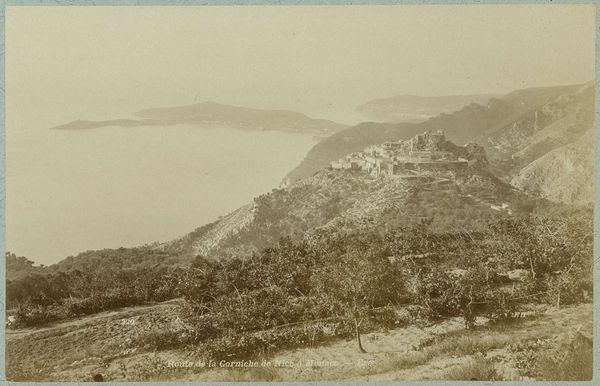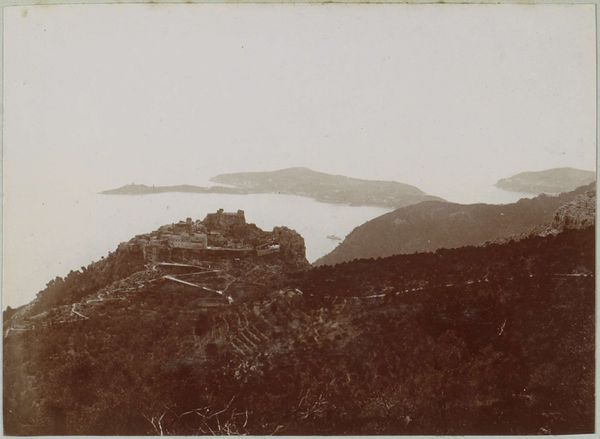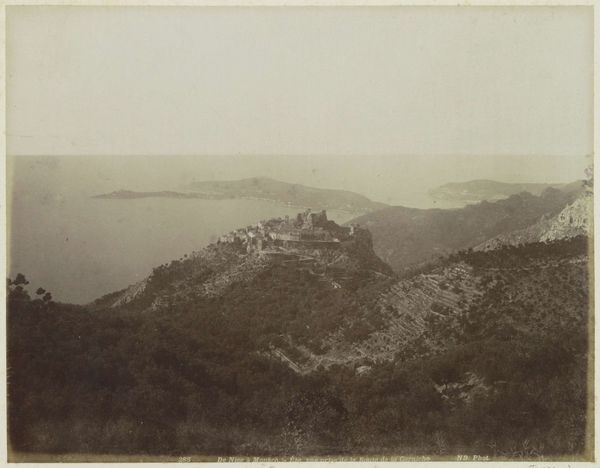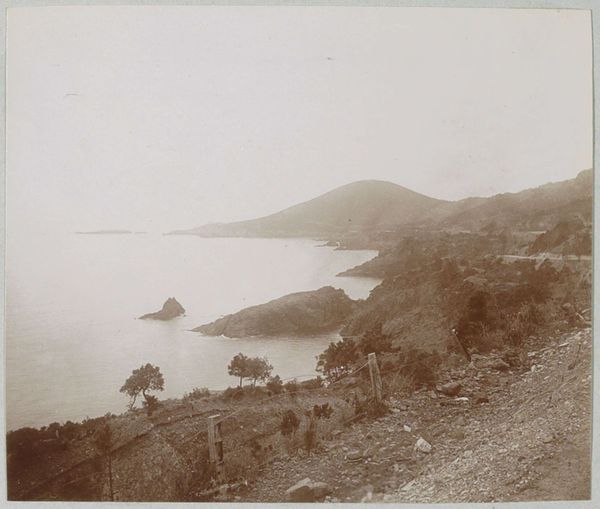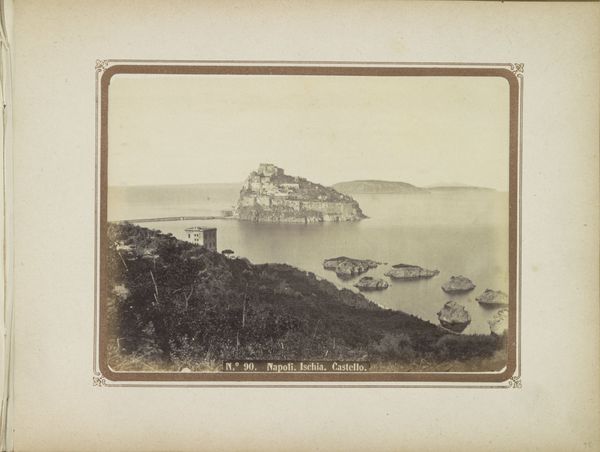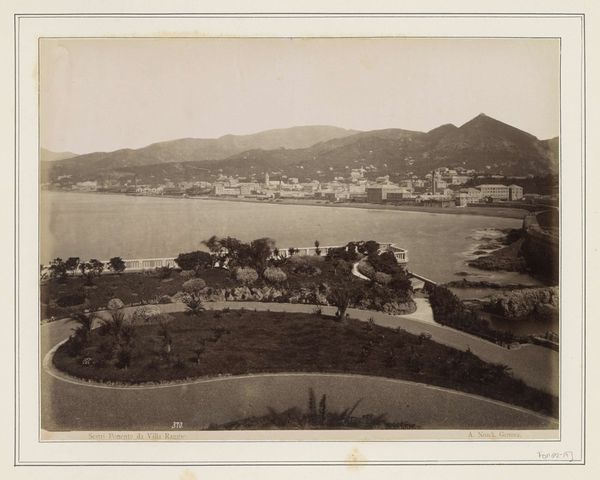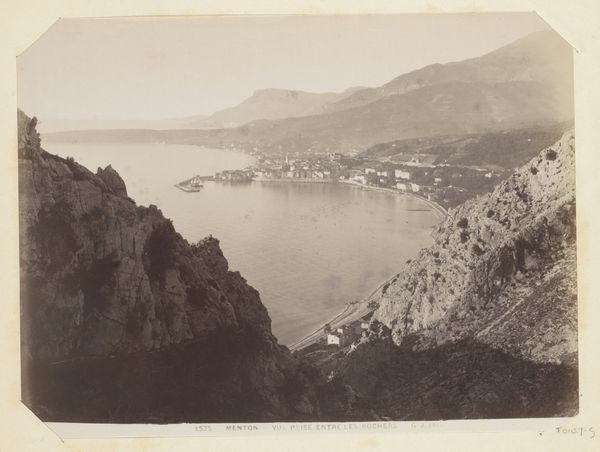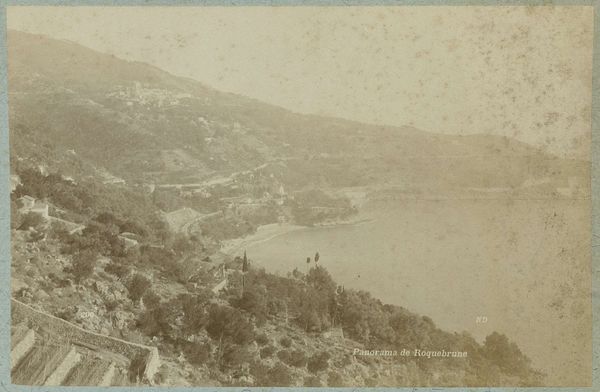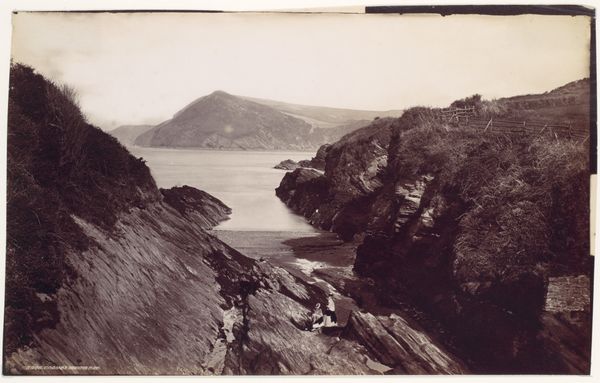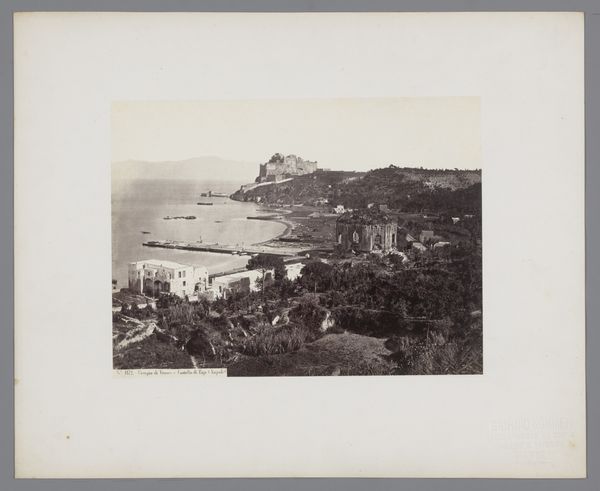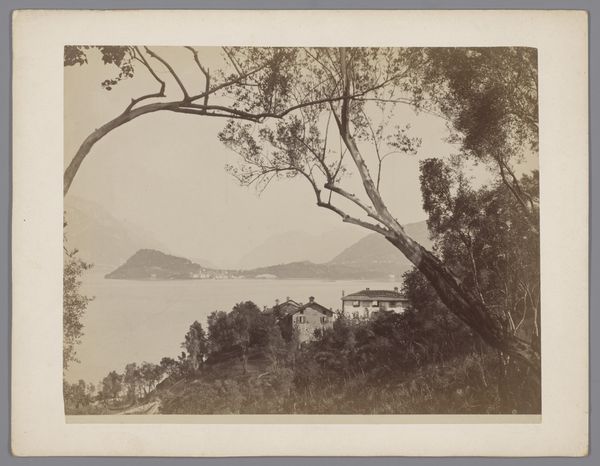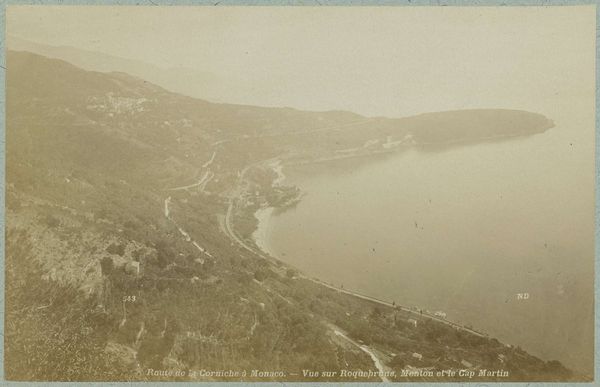
#
natural shape and form
#
natural formation
#
snowscape
#
organic shape
#
charcoal drawing
#
possibly oil pastel
#
charcoal art
#
watercolour illustration
#
watercolor
#
shadow overcast
Dimensions: height 206 mm, width 274 mm
Copyright: Rijks Museum: Open Domain
Curator: Oh, look, what a brooding beauty. Editor: Indeed. We’re gazing upon Étienne Neurdein’s, "View of Èze between Nice and Monaco," captured somewhere between 1870 and 1900. Curator: The tones are so somber. It feels like the moment just before a storm engulfs the Mediterranean. Even that little village perched up there seems to be holding its breath. It feels both romantic and a little menacing. Editor: Well, consider the rise of seaside tourism during that period. The French Riviera was becoming this playground for the elite. Neurdein likely intended to capture the exotic allure of the landscape, but through the lens of the anxieties that accompany such rapid socio-economic changes. The looming village may indicate societal concerns over landscape consumption. Curator: Perhaps. Or maybe he just found it visually arresting? All those terraced hills leading to that almost dream-like water... Look how the light sort of melts everything together! You can practically taste the salt in the air. I think he must have been drawn to that tension, between civilization and raw nature. It has that sort of "picturesque decay" mood. Editor: Neurdein was a commercial photographer with studios across Europe and North Africa. These landscapes weren't simply artistic expressions, they were carefully crafted images meant to be sold and distributed, shaping popular perceptions and promoting specific ideas about place. This particular view, likely reproduced as postcards, contributes to the commercialization of leisure and geography, rendering a sense of wild beauty accessible to a burgeoning tourist demographic. Curator: See, for me it hits a deeper chord, beyond the immediate aesthetic. Those dark crags contrasted with the silvery water remind me how temporary we are, these human constructs nestled precariously into an eternal scene. It’s a nice picture about a deeper understanding. Editor: Well, photographs, then as now, were never simple representations of reality. They always served to build and convey socio-political and economic narratives, whether consciously or not. But sometimes they also help us escape. Curator: I’ll raise a glass to that!
Comments
No comments
Be the first to comment and join the conversation on the ultimate creative platform.
